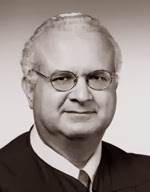The UCLA Faculty Association is part of a UC-wide coalition of faculty associations known as CUCFA–the Coalition of UC Faculty Associations. Through CUCFA, UC faculty are able to address the UC Office of the President on issues of importance to faculty, their students, and staff. Below is a round-up of recent communication between CUCFA and UCOP.
UC Union Coalition on Health Insurance Costs
CUCFA signed on to a joint letter from unions representing employees across the UC system expressing concern with large increases in the cost of health insurance. The unions requested a meeting to “address what appears to be a conflict of interest in how it negotiated the 2024 rate increases with the providers in its own system. Given that two of the major plans available to UC employees are based on the UC hospital system and professional medical groups, UCOP should have invited a third party to participate in the negotiations over the plan cost increases.”
Opposing Proposed Website Policy
Faculty addressed the UC Regents proposed new policy limiting statements on departmental websites: “At a time when free speech and academic freedom are under threat on many campuses, the proposed policy is recklessly ambiguous. The Regents are still debating whether the new policy will apply to all websites or solely to the landing pages of department websites, and that is a huge policy difference. In failing to adequately define what constitutes a political statement, it runs the risk of serious overreach and abuse. This is all the more alarming as the policy does not specify who is responsible for its enforcement: which university office or position will be responsible for policing the policy?”
Support for Math Standards in UC Admissions, Shared Governance
Addressing the Regents proposal to change math standards for admission, CUCFA wrote: “We are alarmed that the Regents have recently chosen to ignore the recommendations of the Academic Council and its systemwide Senate committees on a number of key issues. The centrality of faculty governance to the University of California is critical to maintaining its international reputation for excellence and recruiting the best scholars and teachers. It is especially concerning that the Regents have overruled their own faculty in educational matters–like admission standards, curricula questions, and academic freedom–over which faculty have greater expertise. While we consider harmful all the examples of the Regents’ interference in Senate faculty’s delegated authority and the principles of shared governance, here we are writing to address the most recent instance of the Regents substituting their wishes for the expertise of the faculty.”







